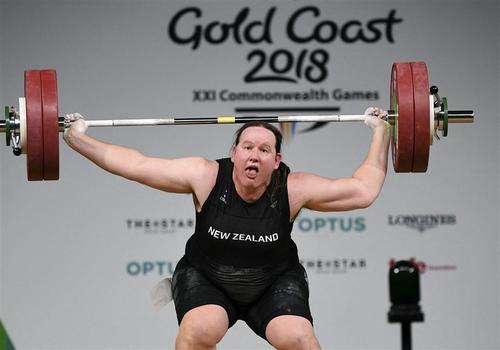A Gold Medal Question: Should Women’s Sports Even Exist?
By Charles Lipson
RealClearPolitics.com
The Tokyo Olympics prompted the latest furor over transgender participation in women’s sports. It came when New Zealand named a transgender woman to its weightlifting team. This athlete’s participation raises questions far beyond this Olympics or that particular sport. The same questions arise whenever a transgender person competes at any level, from high school to world-class. When the winner takes the victory stand, biological women can’t help but wonder if they were treated fairly. Transgender athletes respond, pointedly, that it would be unfair to exclude them.
“She’s a woman,” they say.
“This is a woman’s event. So she should compete.”
The problem with this debate is that it raises other fundamental questions: Should we have women’s sports at all? Why? What is the rationale—and how compelling is it?
The answers to those questions provide an answer to whether transgender athletes should compete in women’s sporting events.
A century ago, the answers would have been obvious.
Men and women were separated for all sorts of reasons—social, cultural, and biological. Mixed competition would have been unthinkable. Today, our norms about gender and sex are substantially different. The default is that men and women should be treated identically. Treating them differently, such as separating them in competition, requires a strong rationale, at least in liberal, Western societies. Separate treatment violates deeply held modern norms, which oppose discrimination because of irrelevant criteria, such as race, sex, gender, religion, and national origin.
We consider it a national disgrace that black baseball players were excluded from Major League Baseball until Jackie Robinson ran onto the field on April 15, 1947. His race had no bearing on his skill as a ball player. Yet no one today would celebrate Rory McIlroy or Dustin Johnson “integrating” the women’s professional golf tour.
Why the objections to McIlroy or Johnson on the women’s tour? For the same reason golf courses provide separate tees for women, the same reason the WNBA uses a smaller basketball than their male counterparts, the same reason there are thriving women’s leagues in tennis, soccer, bowling, and dozens more. It is not about the social construction of gender; it is about biological differences that bear directly on performance.
Biological males and females differ systematically in size, strength, speed, height, lung capacity, and agility. Acknowledging those differences is separate from respecting how any individual self-identifies. Given our widely shared opposition to discrimination, those physical differences are the only reason to permit separate events. If gender differences don’t matter for a particular sport, then the rationale for separate events is weaker than our liberal ideal of non-discrimination.
We would never permit, much less require, this kind of gender separation in chess tournaments. It would violate our basic norms demanding equal treatment unless there are very powerful reasons to treat people differently. Those reasons and their persuasiveness will differ from sport to sport. They hardly matter for equine events like show jumping and dressage. They probably don’t matter for target shooting. But they do matter for archery. Top male athletes pull their bows with higher “draw weights” than do top females, so they can shoot arrows with flatter trajectories, less affected by crosswinds. The differences matter in golf, too. On the men’s professional tour, the average drive is 295.5 yards. On the women’s tour, even the longest hitter doesn’t drive the ball that far.
What about competition in the Boston Marathon, where male winners finish 10 to 15 minutes faster than women? That difference is prima facia evidence that we should crown separate winners. A more interesting fact is that Kenyan men and women win the races nearly every year, consistently beating Americans and Europeans. Yet we would rightly consider it invidious racism to segregate marathons by race or national origin. So, why isn’t it invidious sexism to crown separate men and women winners? The answer lies in our common-sense recognition that men and women have major physical differences.
The Olympics certainly recognizes these consequential differences. In Tokyo, men and women will compete against each other only in equestrian events and one division of sailing.
This kind of separation may not last forever. Social norms are changing. But, for now, we still hold separate sports competitions for men and women, and we do so solely because of their systematic physical differences. If that is the only compelling rationale for separating sports by gender, then it should be the only rationale in determining transgender participation.
The best way to resolve this issue is to step back and ask yourself: Is there any compelling reason to hold separate competition for men and women in this particular sport? The answer might be different for golf, shot put, target shooting, or dressage. If the answer is “Yes, there are strong reasons in this particular sport,” then that same rationale answers the question, “Should transgender women compete against other women in this sport?”
Put simply, if there are good reasons for holding separate competitions at all, then transgender women should not compete against other women.
___
https://www.zerohedge.com/political/gold-medal-question-should-womens-sports-even-exist

